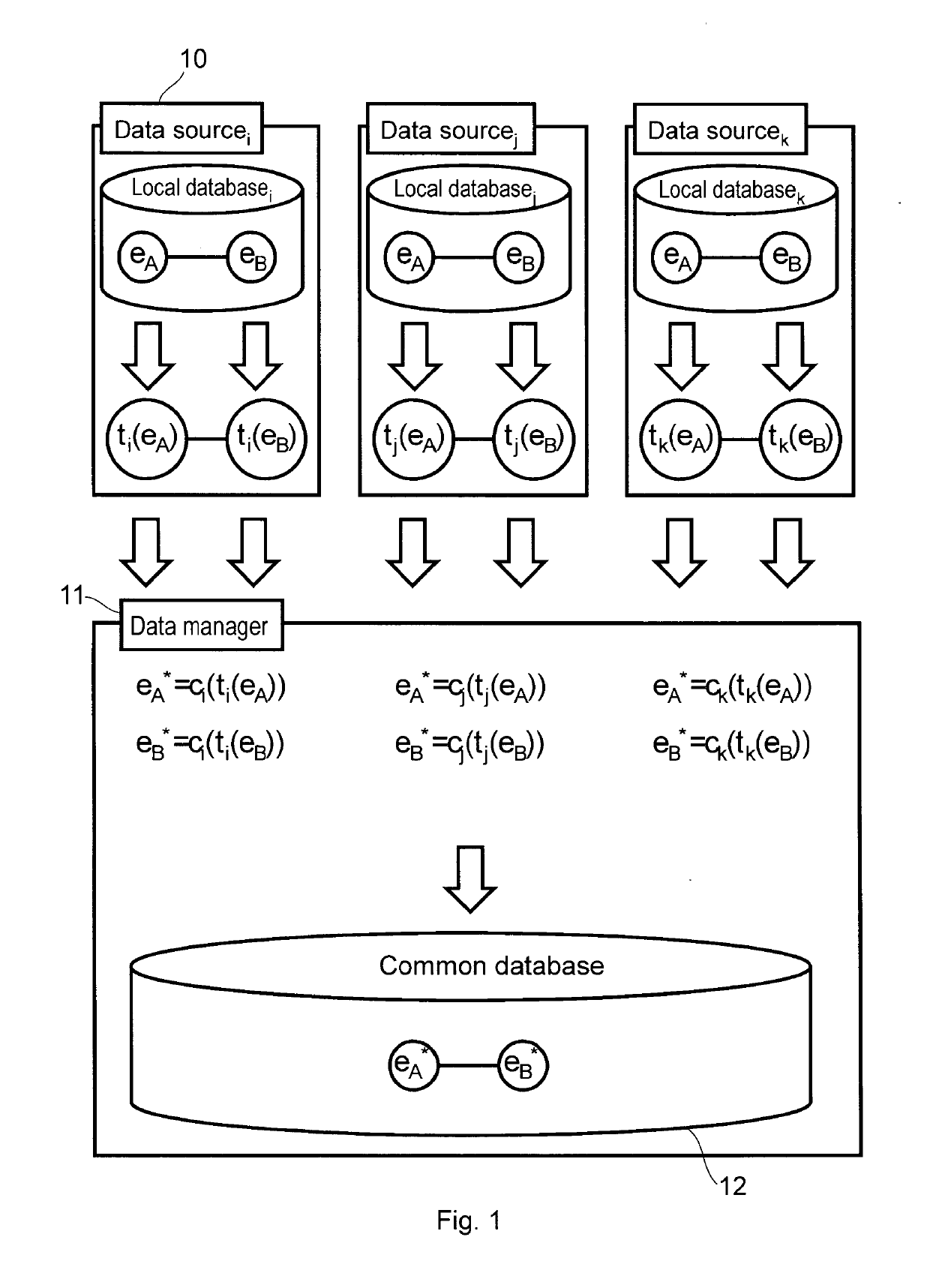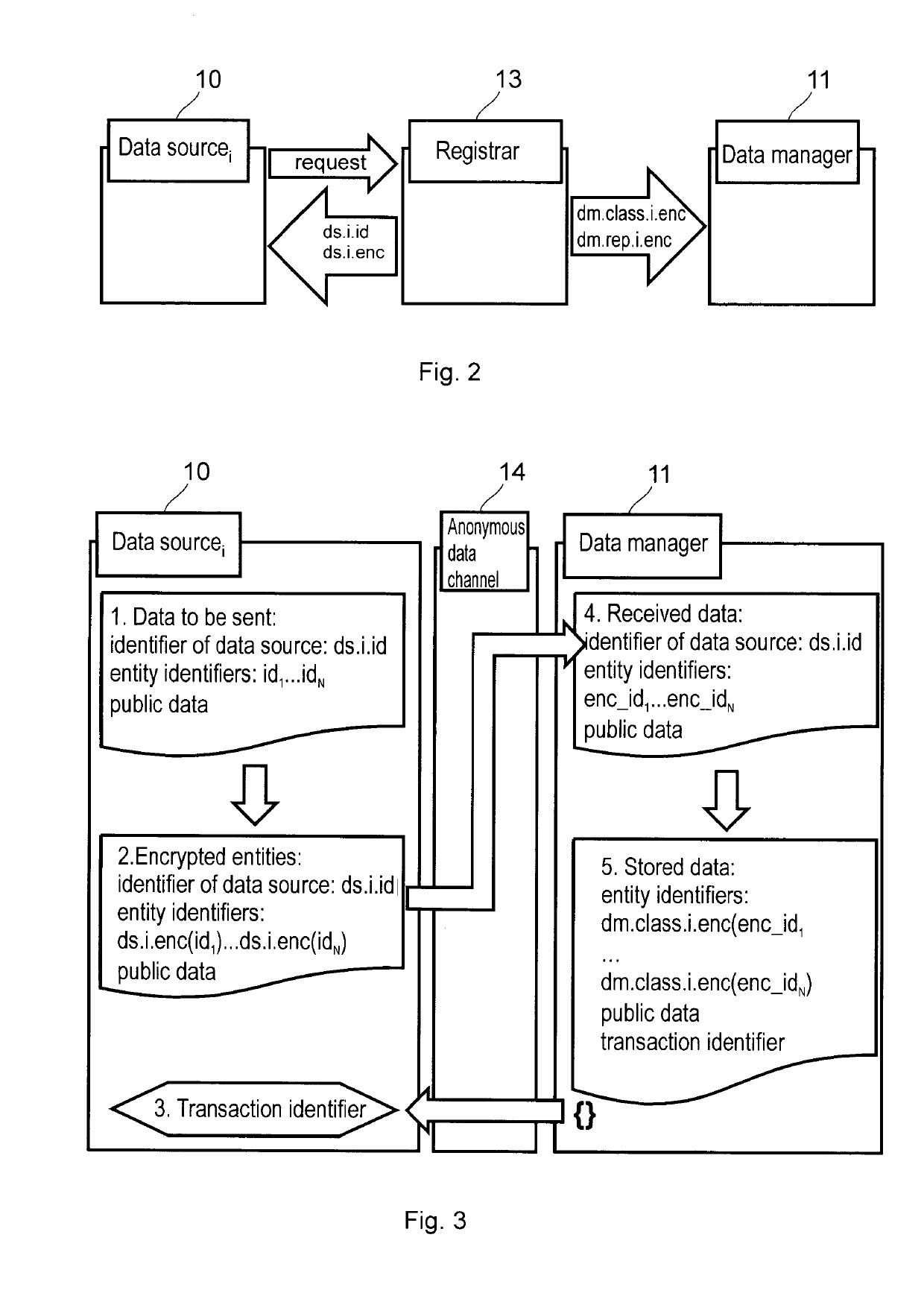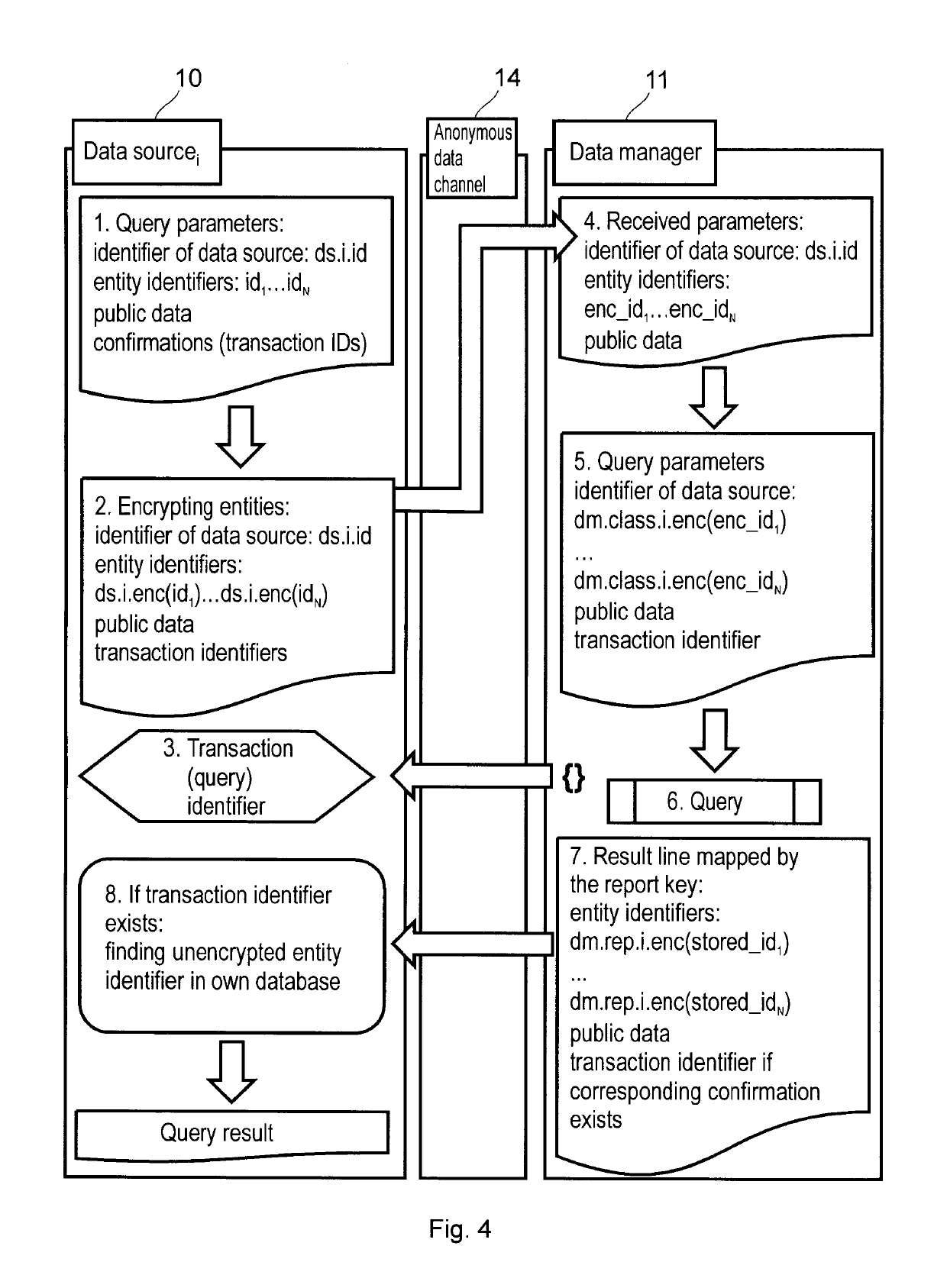Data management method and registration method for an anonymous data sharing system, as well as data manager and anonymous data sharing system
a data management and registration method technology, applied in the field of data management methods and registration methods for anonymous data sharing information systems, can solve the problems of insufficient reliability of the network constructed from the interrelation between the entities, the theoretical obstacle to restricting the central data management actor(s) on recognizing the entities, and the inability to apply with sufficient reliability
- Summary
- Abstract
- Description
- Claims
- Application Information
AI Technical Summary
Benefits of technology
Problems solved by technology
Method used
Image
Examples
Embodiment Construction
[0033]As illustrated in the schematic diagram that can be seen in FIG. 1, in order to prevent identifiability, the data sources 10 have to make unrecognizable (i.e. have to encrypt) the unique identifiers of the stored entities. To do so, each data source 10 has to use a unique, private encryption key. Thereby the identifier of a given entity (e.g. a number) is passed on encrypted in the transmitted information in the form of as many different values as the number of the data sources 10 that are sending information on it. To allow for subsequent data analysis, the data collector, i.e. the data manager 11 has to be able to recognize if entity identifiers, arriving from different data sources, encrypted by different keys, therefore mapped to different values, which ones are representing the same entity, and it has to be able to do that without accessing the original identifier.
[0034]Therefore, the data manager 11 has to possess for each data source 10 a key implementing such a functio...
PUM
 Login to View More
Login to View More Abstract
Description
Claims
Application Information
 Login to View More
Login to View More - R&D
- Intellectual Property
- Life Sciences
- Materials
- Tech Scout
- Unparalleled Data Quality
- Higher Quality Content
- 60% Fewer Hallucinations
Browse by: Latest US Patents, China's latest patents, Technical Efficacy Thesaurus, Application Domain, Technology Topic, Popular Technical Reports.
© 2025 PatSnap. All rights reserved.Legal|Privacy policy|Modern Slavery Act Transparency Statement|Sitemap|About US| Contact US: help@patsnap.com



